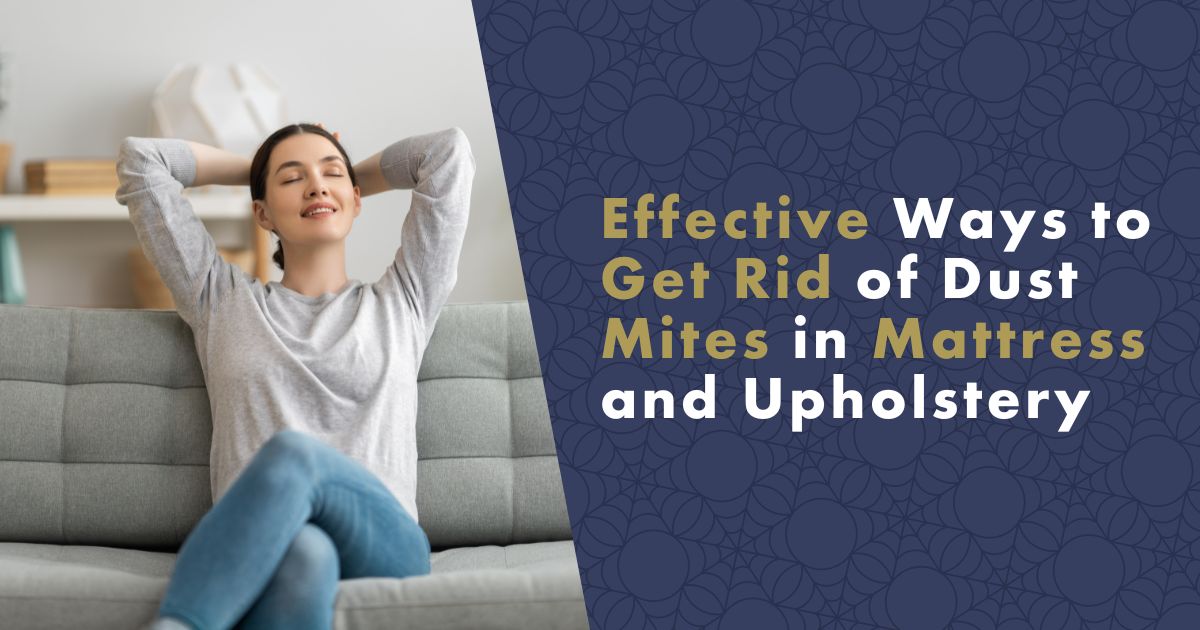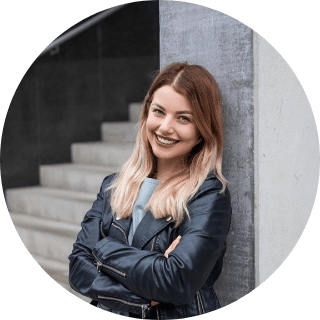Allergy sufferers often face a major issue with the presence of millions of dust mites, which can be found in sofa upholstery, bedding, carpets, and plush toys. These mites, which belong to the arachnid family, can cause allergic reactions. One of the challenges is that these mites are not visible to the naked eye and are particularly hard to eliminate from mattresses or upholstery using regular cleaning methods. In this article, we will explore effective methods for preventing dust mite accumulation in mattresses and how to easily eradicate them using an ozone generator.

Discover the Health Risks Associated with Dust Mites and How to Minimize Exposure
Mites are small invertebrate animals that range in size from 0.1 to 20 mm. They primarily feed on skin scales, fungi, bacteria, or yeast, which makes areas where people move and touch their breeding grounds. As a result, upholstered furniture, mattresses, and children's plush toys are common places where mites can be found. Mites tend to thrive in areas with high moisture levels, such as bed linens, and where there is no exposure to sunlight.
Allergy sufferers, asthmatics, and individuals with sensitivities face significant harm from the feces and disintegrated bodies of mites, which are the primary sources of allergens. These substances contain a digestive enzyme called protease, which can cause skin and conjunctiva inflammation, worsen asthma, and trigger allergic rhinitis. In fact, the average person sheds approximately 1 g of skin flakes per day, which can provide nourishment for up to 1 million mites.

Tip: What Is Dust Mite Allergy?
The average lifespan of mites ranges from 20 to 30 days for males and up to 10 weeks for females. During this time, females can produce up to 100 eggs per day, while generating roughly 2,000 particles of feces and partially digested enzymes. Clearly, these tiny creatures are incredibly productive.
Effective Ways to Eliminate Mites: Tips and Tricks You Need to Know
It should be noted that the appearance of mites itself has nothing to do with cleanliness and hygiene, they are found in all households and commonly fly through the air. But what we can influence is their quantity.
To ensure clean air and reduce the negative impact of pollutants, it's best to use a quality air cleaner equipped with a HEPA filter. This filter can capture tiny particles like dirt, viruses, mold spores, smoke, smog, and even mite feces, thus minimizing the harmful effects of polluted air on the body.
Moreover, regular ventilation, washing of covers and coatings, and dusting, hard surfaces like furniture and floors without carpets can help reduce the number of mites in your home. Lowering the temperature in rooms can also be an effective way to control mite populations.
Myths about Getting Rid of Mites
Mites are incredibly resilient creatures and can survive in dry air, making it almost impossible to get rid of them completely with just a vacuum cleaner. While carpets are often thought to be the main source of dust mites, they are actually far more common in bedding. This is because people spend a lot of time lying in their beds and shedding dead skin, which becomes the primary source of food for mites.
1) Anti-Allergic and Hypoallergenic Mattresses
Do you believe that having an anti-allergic mattress means you're safe from mites in your bed? Think again. Not all mattresses are effective in keeping mites out for an extended period. The market offers a range of materials and surfaces labeled as anti-mite, but many use condensed fiber. Initially, the fiber keeps mites out of the mattress, but it degrades over time, allowing mites to enter and trigger allergic reactions like rhinitis or rashes.
One issue with mattresses is that some are marketed as hypoallergenic, leading people to believe they are anti-allergic to dust mites. However, we must disappoint you, as this is not the case. Hypoallergenic simply means that the product is suitable for sensitive skin, containing materials that do not cause allergies. It does not provide 100% protection against the allergens produced by mites.
2) Washing Bedding at 60 °C
Do you think that changing your sheets regularly and washing them at 60°C means you're safe from dust mites? Unfortunately, that's not the case. While washing at a higher temperature can kill dust mites in the short term, their bodies can still become food for another colony that may already be lurking in your pillows and mattresses.

Tip: How to choose bedding for allergy sufferers?
3) Getting Rid of Dust Mites: Can Frost and Sun Exterminate Them?
Many people wonder if they can get rid of mites by exposing their bedding and other items to sunlight during summer or the cold temperatures of winter. Unfortunately, this is only a temporary solution as mites will eventually return, just like washing sheets. It's a never-ending cycle. Mites are omnipresent in our homes, making it practically impossible to exterminate them completely. While there are insecticides available, their effects are short-term, and the potential health risks outweigh the benefits.
How to Rid the Mattress of Dust Mites from the Upholstery in the Long Term?
As previously mentioned, mattresses are the biggest source of dust mites in the home because they retain moisture and are not exposed to sunlight. Therefore, every allergy sufferer should consider equipping their mattress with an anti-mite coating that can be kept clean through regular washing. Ideally, the coating should be made of a suitable material such as a multilayer fabric with a nanofiber barrier.
1) Invest in Hi-Tech Mattress Covers – Anti Allergy and Anti Dust Mite Bedding
In a world where allergens are inevitable, ensuring a safe and clean sleeping environment is essential for allergy sufferers. NanoSPACE® barrier mattress covers emerge as a beacon of relief for those tormented by the relentless sneezing, itching, and other allergic reactions triggered by dust mites and other allergens. These specially designed mattress covers are not just a barrier; they are a fortress against the microscopic invaders, ensuring a sound sleep free from allergic triggers.
The secret to NanoSPACE®'s effectiveness lies in its meticulously engineered multi-layer fabric, which houses a nanofiber barrier. Unlike traditional textiles that offer minimal to no protection against allergens, the nanofiber barrier in NanoSPACE® mattress covers is a game-changer. Its ability to trap allergens is unparalleled, ensuring 100% protection against the microscopic foes that cause respiratory diseases.
Here’s a closer look at the variety of NanoSPACE® barrier mattress covers tailored for different needs:
-
Anti-Dust Mite and Allergen Proof Fitted Mattress Protector:
- Fitted style makes it a popular choice.
- Provides protection from the top.
- Ideal for standard beds but not suitable for bunk beds.
-
Anti-Dust Mite and Allergen Proof Mattress Encasement:
- Zippered encasement offers total mattress protection.
- A necessity for bunk beds.
- Not the best fit for heavy mattresses due to its zippered nature.
-
Anti-Dust Mite and Allergen Proof Mattress Protector (Non-fitted):
- Ideal for atypical mattress sizes.
- Suitable for travel, providing a shield against allergens wherever you go.
-
Anti-Dust Mite Mattress Encasement Nanocotton®:
- A boon for individuals with atopic skin.
- Serves as the top layer, eliminating the need for additional bedding.
- Can also be used as a cover, providing flexibility.
Investing in NanoSPACE® barrier mattress covers is an investment in health. By creating a safe haven free from allergens, these covers substantially reduce the dependency on relief medications, which often have the downside of suppressing overall well-being along with the allergies.
The NanoSPACE® range offers a tailored solution for everyone, whether you have a standard bed, a bunk bed, an atypical mattress size, or you are always on the go. The peace of mind knowing that you are shielded from allergens, especially during the serene hours of sleep, is priceless.
Embrace the NanoSPACE® technology and let your nights be filled with restful sleep, not sneezes and coughs. Your journey towards an allergen-free sleep environment begins with a NanoSPACE® barrier mattress cover.
#produkty#https://www.nanospace.store/mattress-covers/
2) Ozone Generators
An alternative method for eliminating dust mites in your home is to use ozone generators, which can purify the air of mold, allergens, viruses, and bacteria.
Ozone is a powerful oxidizing agent that can not only eradicate bacteria and viruses but also eliminate odors, molds, and dust mites. It can effectively clean not only the air in the room but also surfaces and objects. As a result, it is an excellent tool for thoroughly disinfecting apartments, offices, clinics, and other spaces, as well as textiles, furniture, plaster, and children's toys.
#produkty#https://www.nanospace.store/ozone-generators/
Tip: Is cleaning air with ozone really safe and healthy? Read on the blog.
To effectively kill mites using ozone, high doses of it are required, which can be achieved by repeatedly applying ozone from LifeOX Air ozone generators. For best results, we suggest wrapping the contaminated areas in a plastic bag to increase the ozone concentration in the location where the mites are present.
Sources
- Arlian LG, N. J.-M. (1999). Reducing relative humidity to control the house dust mite Dermatophagoides farinae. J Allergy Clin Immunol, 852-6.
- Arlian LG, A. A. (n.d.). Lowering humidity in homes reduces dust mites and their allergens. J Allergy Clin Immunol, 99-104.
- Nurmatov U, van Schayck CP, Hurwitz B, et al. House dust mite avoidance measures for perennial allergic rhinitis: an updated Cochrane systematic review. Allergy. 2012;67(2):158–65.
- RL Brandt, L. A. (1976). Mortality of house dust mites, Dermatophagoides farinae and D. pteronyssinus exposed to dehydrating conditions or selected pesticides. JMed Entomol, 327-352.
- HALKEN, Susanne, et al. Effect of mattress and pillow encasings on children with asthma and house dust mite allergy. Journal of allergy and clinical immunology, 2003, 111.1: 169-176.
- HAN, Jae-Hyuk, et al. Killing effect of ozone on house dust mites, the major indoor allergen of allergic disease. Ozone: science and engineering, 2006, 28.3: 191-196.
- SCHEI, M. A.; HESSEN, J. O.; LUND, E. House‐dust mites and mattresses. Allergy, 2002, 57.6: 538-542.
- NADCHATRAM, M. House dust mites, our intimate associates. Trop Biomed, 2005, 22.1: 23-37.

